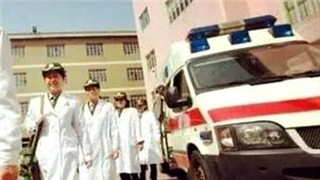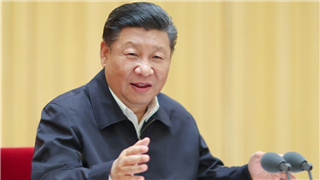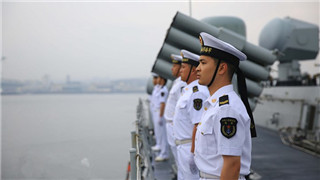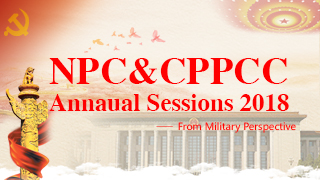
The US Forces Korea (USFK) Command and ROK-US Combined Forces Command held a ceremony to officially open their new headquarters at Camp Humphreys in Pyeongtaek, Gyeonggi Province of the ROK.
Gen. Vincent Brooks, Commander of USFK said "it is the largest overseas US military base in the world and marks a historic milestone in the history of the United Nations Command and the history of the ROK-US alliance."
The ROK media commented the "relocation" began a new chapter in America's military presence in the ROK, although many issues remaining unsolved.
Beginning of the "Pyeongtaek era"
The new headquarters in Pyeongtaek put an end to the 73-year stationing of US troops in Yongsan and the 61-year "Yongsan era" of USFK Command and ushered in the "Pyeongtaek era".
According to ROK media, the new base is the largest US overseas military base in the world measuring 14.677 million square meters in area with 513 buildings. The Eighth Army headquarters, which is the highest command of USFK Army, already relocated to the new base in July last year. More than 43,000 USFK troops and their families will live in the new base when the relocation is fully completed including amenities such as schools, stores, banks, stadiums and other facilities.
The ROK's JoongAng Ilbo reported that some buildings were still under construction and expected to be completed before the 2020 deadline. By then the USFK troops' quality of life improvements, defense level and war readiness will be enhanced across the board.
It is learnt that the Pyeongtaek base will serve as a combat pivot for the USFK in the future and can provide military assistance in case of emergency.
Reasons for the relocation
Analysts pointed out that the USFK decided to relocate to the south of Han River for the following reasons.
Firstly, it provides better security. Although the situation on the Korean Peninsula has eased up, potential risks still exist. In terms of military deployment, the Yongsan base is about 60km from the Korean Demilitarized Zone (DMZ) while the Pyeongtaek base is about 90km from there, and strategically the Pyeongtaek base provides a better defense against the DPRK's long-distance fire strike.
Secondly, it has more maneuvering flexibility. Adjacent to the Pyeongtaek base, the Pyeongtaek port, Pyongtaek station and the Osan base can serve as the entries for US reinforcements and the exit for non-combat personnel’s evacuation.
By centralizing the USFK families who are scattering across the ROK in Pyeongtaek, the US can relocate them conveniently and quickly in case of emergency. The Stars and Stripes commented that after the southward relocation, the USFK will have less reliance on the frontline troops and depend more on the air force and flexible small ground troops, as well as the high-tech combat system.
Thirdly, it has a clear objective. Japanese newspaper The Asahi Shimbun reported that with its USFK facing a changing environment, the US wants to deal with the threat from the DPRK as well as aims at the whole Asia at the same time, and thus the USFK's role may shift from "deterring" the DPRK to the regional "check and balance" in the future.
Future of USFK
Due to Pyeongtaek residents' strong opposition against the camp expansion, the southward relocation of the USFK Command has lasted more than ten years and just come to the final stage.
On the one hand, it indicates that the US and the ROK have to be bound together for respective interests despite their divergences, and on the other hand, it also means the work after the relocation won't be easy.
Firstly, how to solve the divergences? Although the USFK's southward relocation is basically complete, some potential conflicts haven't been resolved substantially.
The first issue is the expense. The fourth round of negotiation between the US and the ROK on June 27 which aimed at signing the 10th Special Measures Agreement (SMA) broke down, indicating the military expense between the two cannot be resolved for the moment.
The Pyeongtaek base cost about 12 trillion Korean Won (about RMB72 billion), and it is said that the ROK government paid for over 90% of it. Will this cause the dissatisfaction of the ROK government and its people? Will the ROK take this as a bargaining chip for the next negotiation? There are many uncertainties remain.
The second issue is environment. Social groups like Green Korea United protested that the environment surrounding the Yongsan base has been seriously polluted, the concentration of Group 1 benzene cancerogen is above the limit, and 84 oil leak incidents took place from 1990 to 2015.
The ROK media predicted that the follow-up cleaning up of the Yongsan base will probably trigger more disputes, and people will likely be concerned about whether the environment around the Pyeongtaek base will be polluted too.
Secondly, how will the USFK change in size? According to American media, President Trump once ordered the Pentagon to study the options of withdrawing American troops from the ROK. Someone analyzed that as the USFK Command moved to the new headquarters, it seems the US won't pull its troops out of the ROK for the foreseeable future. President Trump has repeatedly vowed to cut US troops in the ROK and suspend US-ROK joint military exercises, which might be his way of pressuring the ROK to bear more military expenses.
As to the number of the USFK, Reuters revealed that US Secretary of Defense Mattis made a promise to the ROK that the current size of the USFK won't change, even though diplomats are trying to reach an agreement with the DPRK on denuclearization.
In other words, the scale and composition of the USFK may be adjusted according to the progress on the Korean nuclear negotiation, but its presence won't be affected before the negotiation comes to the last stage.
Thirdly, how will the alliance develop? Moon Jae-in's special advisor Moon Chung-in once said that the ROK should give up its alliance with the US for its own interests. America's monthly magazine The Atlantic also said if negotiations on the Korean nuclear issue succeeded, the geopolitics on the Korean peninsula would be changed significantly, and maybe it's time to re-evaluate the US-ROK alliance.
However, in his congratulatory remarks to the USFK Command's relocation, Moon Jae-in said as the USFK comes to the "Pyeongtaek era", he hopes the US-ROK alliance will go beyond the old military and comprehensive alliance and evolve to be a "great alliance".
We cannot conclude how the US-ROK alliance will develop based on any single party's comments. This will be up to many factors -- will the DPRK insist on the withdrawal of US troops from the ROK, will the ROK be able to maintain its independence, and does the US take the Korean peninsula as its only target?
All in all, the US and the ROK are simply "moving to the new home" now but they don't wish to "dismantle the old home" yet.
(The author is Li Gaozhe. The article was published on the China's National Defense newspaper on July 6. It is translated from Chinese into English and edited by the China Military online.)











